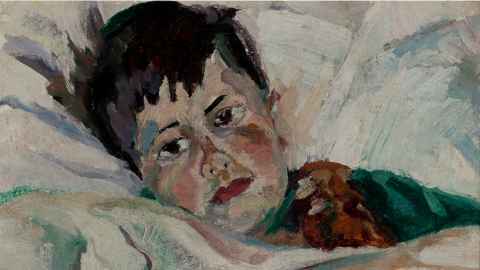Is the future of the arts female?
11 March 2020
Opinion: There are more women than ever in the arts, so are we seeing an upswing in demand for artwork by female painters? Unfortunately not, explains Linda Tyler.

Women artists have never had it so good. In Aotearoa New Zealand, female art students now vastly outnumber their male counterparts, and women predominate in professional positions in the country’s galleries and museums.
The future in the arts has arrived and it is finally female, it would seem. But has there been a corresponding upswing in the collecting of artwork by women artists, a stampede to buy their work resulting in high prices and promoting sustainable livelihoods for the nation’s art school graduates? Sadly no.
The most expensive art work by a female artist ever sold at auction locally is by the decidedly dead Frances Hodgkins (1869-1947) and even the New Zealand woman artist whose work commands the highest prices in the primary market, Liz Maw, has only recently seen her work creep into six figures. In contrast to her slow achievement, prices for new paintings by men such as Bill Hammond and Shane Cotton have doubled, trebled and quadrupled over the last two decades.
At the height of second wave feminism in the US, art historian Linda Nochlin penned her influential article, 'Why Have There Been No Great Women Artists?' She died in 2017, without ever hearing a satisfactory answer. British feminist art historians Griselda Pollock and Roszika Parker helpfully responded 16 years later in their book Old Mistresses: Women, Art and Ideology by suggesting that Nochlin had been asking the wrong question.
Recently announced as the winner of the Holberg Prize for her outstanding contribution to the humanities – with prize money of six million Norwegian kroner (USD$650,000) – Pollock capitalised on the publicity by commenting: “I have spent the last 40 years creating new concepts with which to challenge art history’s white patriarchal structure, to produce ways of thinking about art, its images, its practices, arts effects that are not about admiration of selective greatness.”
Yet the art world seems wed to the notion of the lone great genius, and to serving up art created by women as a direct reflection of their lives. When the New Zealand collective, et al., was chosen to exhibit at the Venice Biennale in 2005, the artist heading the collective, Merylyn Tweedie, controversially refused to accede to demands that she perform as a spokesperson for the work.
Recently, the National Gallery in London began to amp up the trauma quotient of “iconic and viscerally violent” paintings in its blockbuster exhibition of pioneering Italian Baroque artist Artemisia Gentileschi (1593-1656) by referring to the death of her mother in childhood, rape at the age of 18 and her loss of four babies as a young mother. When will it be time to talk about the art and not the woman?
Making exhibitions of the work of historical women artists is often motivated by the desire to write them into the histories from which they are absent. Much of New Zealand’s art history relegates women to the periphery. Female artists appear as amateurs, wacky spinsters or, occasionally, as wives of vastly more significant male artists, with the notable exception of Frances Hodgkins.
Despite the remarkable exhibition curated by Mary Kisler last year, even Hodgkins has been denied the institutional backing to reinsert her into the history of European modernism which the touring of that show in Britain would facilitate.
Perhaps she just needs a man to notice her? The roving eye of the Royal Academy’s senior curator Adrian Locke fell on paintings of Rita Angus (1908-1970) when he visited New Zealand in 2017, and as a result, 70 of her works will be displayed in the exhibition Rita Angus: New Zealand Modernist in October this year. Unfortunately, it is 50 years too late for Rita to enjoy the attention.
After a year celebrating the life and work of another male modernist, Colin McCahon (1919-1987), Aucklanders will have the opportunity to consider the contribution of the artist he married, painter Anne Hamblett (1915-1993). Works dating from the period before she became ‘Mrs McCahon’, are on show at Auckland’s Michael Lett Gallery alongside a portrait he painted of her in the year after they wed.
The landscapes and still life paintings she made in the years 1938-1942 show her links to fellow painter Doris Lusk (1916-1990) with whom she shared an all-women studio and exhibiting space, filled with flowers. Despite enjoying successes with exhibitions in Dunedin and Wellington, and having her work reproduced in Art in New Zealand, the only public institution which has a collection of Anne Hamblett paintings is Dunedin’s Hocken Library, which has generously loaned them for this occasion.
It is a rare chance to see works by a woman artist from the period before she became the artist’s wife.
Anne Hamblett: Early Works is at Michael Lett Gallery, 312 Karangahape Road, Auckland from 11 March to 9 April 2020.
Associate Professor Linda Tyler is from the University of Auckland's Faculty of Arts and is convenor of the Museums and Cultural Heritage programme.
This article reflects the opinion of the author and not necessarily the views of the University of Auckland.
Used with permission from Newsroom Is the future of the arts female? 11 March 2020.
Media queries
Alison Sims | Research Communications Editor
DDI 09 923 4953
Mob 021 249 0089
Email alison.sims@auckland.ac.nz